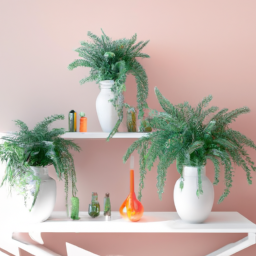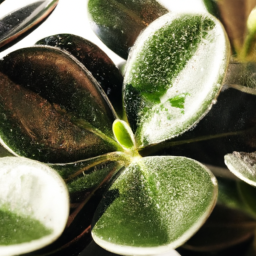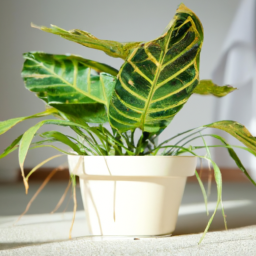
Are indoor plants dangerous? This is a question that often crosses the minds of many plant enthusiasts and homeowners alike. We all love the idea of bringing a touch of nature indoors, but concerns about potential risks and hazards may leave us wondering if it’s a safe choice. In this blog post, we will delve into the topic of indoor plants and explore whether they pose any dangers to our health and well-being. So, if you’ve ever pondered the question, “Are indoor plants dangerous?” – keep reading to find out the answer!
Potential Health Risks Associated with Indoor Plants
As an expert on indoor plants, I understand the concerns regarding their potential health risks. While indoor plants offer numerous benefits such as improving air quality and enhancing aesthetics, it is essential to be aware of certain risks associated with them. In this guide, I will provide you with a step-by-step analysis of the potential health risks associated with indoor plants.
1. Allergies and Respiratory Issues
Indoor plants, like any other living organisms, release pollen and spores into the air. These particles can trigger allergies and respiratory issues in sensitive individuals. Common symptoms include sneezing, coughing, itchy eyes, and congestion. Those with pre-existing respiratory conditions, such as asthma, may experience exacerbation of their symptoms in the presence of certain indoor plants.
To minimize the risk, it is recommended to choose plants with low pollen and spore production. Plants such as snake plants, peace lilies, and spider plants are generally considered safe options. Regularly dusting the leaves and keeping the indoor space well-ventilated can also help reduce the concentration of allergens in the air.
However, it is important to note that not everyone is susceptible to plant-related allergies. If you have never experienced any adverse reactions to plants before, it is unlikely that indoor plants will pose a significant risk to your health.
2. Toxicity of Indoor Plants
While most indoor plants are harmless, some species can be toxic if ingested or come into contact with the skin. This is particularly important to consider if you have young children or pets at home. Common symptoms of plant toxicity include nausea, vomiting, skin irritation, and in severe cases, organ damage.
It is crucial to research the toxicity level of any indoor plant before bringing it into your home. Plants such as the dumb cane (Dieffenbachia), pothos (Epipremnum aureum), and certain varieties of philodendrons are known to be toxic. If you have children or pets, it is advisable to opt for non-toxic plants like Boston ferns, African violets, or palm trees.
In case of accidental ingestion or exposure to a toxic plant, it is important to seek immediate medical attention. Keep the contact information of your local poison control center readily available.
3. Mold Growth and Indoor Air Quality
Indoor plants require moisture to thrive, and this moisture can create a conducive environment for mold growth. Mold spores can cause allergic reactions and respiratory problems, especially in individuals with mold sensitivity. Moreover, excessive moisture can also lead to increased humidity levels, which can promote the growth of other indoor allergens such as dust mites.
To prevent mold growth and maintain good indoor air quality, it is crucial to implement proper plant care practices. Avoid overwatering your plants and ensure proper drainage. Regularly inspect the soil for signs of mold or fungus and promptly remove any affected areas. Additionally, using a dehumidifier in areas with high humidity can help control moisture levels.
It is also worth noting that the presence of indoor plants can have a positive impact on air quality by reducing carbon dioxide levels and increasing oxygen production. Therefore, the benefits of indoor plants often outweigh the potential risks, especially when proper care and maintenance are practiced.
In conclusion, while indoor plants can bring beauty and numerous benefits to your living space, it is important to be mindful of the potential health risks they may pose. By selecting non-toxic plants, practicing good plant care, and being aware of any allergies or sensitivities, you can enjoy the benefits of indoor plants while minimizing the associated risks. Remember, a healthy and thriving indoor garden starts with informed choices.
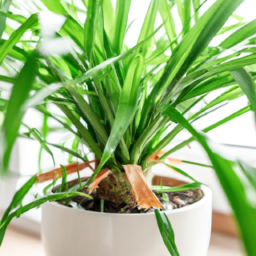
Common Indoor Plants That Can Be Harmful to Pets
Many people enjoy having indoor plants as they bring a touch of nature into their homes. However, it is essential to be aware that not all indoor plants are safe, especially for our furry friends. While some plants can be harmless, others can pose a threat to the health of our beloved pets. In this article, we will discuss some common indoor plants that can be harmful to pets and provide you with a step-by-step guide to ensure the safety of your furry companions.
1. Peace Lily
The Peace Lily, also known as Spathiphyllum, is a popular indoor plant due to its elegant white flowers. However, pet owners should exercise caution as this plant can be toxic to cats and dogs if ingested. The leaves and flowers of the Peace Lily contain calcium oxalate crystals, which can cause oral irritation, excessive drooling, difficulty swallowing, and vomiting. If you suspect your pet has ingested any part of the Peace Lily, it is important to contact your veterinarian immediately.
To prevent any accidents, keep the Peace Lily out of reach of your pets. Consider placing it on a high shelf or using hanging baskets to ensure your furry friends cannot access it. Additionally, provide alternative pet-friendly plants to satisfy their curiosity and keep them away from potentially harmful ones.
If you notice any symptoms of plant ingestion, such as drooling or vomiting, do not hesitate to seek veterinary care. It is always better to be safe than sorry when it comes to the well-being of our pets.
2. Aloe Vera
Aloe Vera is a succulent plant known for its numerous health benefits for humans. However, when it comes to pets, Aloe Vera can be harmful if ingested. The gel inside the Aloe Vera plant contains anthraquinone glycosides, which can cause gastrointestinal upset, diarrhea, and even tremors in cats and dogs.
If you have Aloe Vera plants in your home, make sure they are placed in areas that are inaccessible to your pets. Consider using plant stands or placing them on high shelves. It is also important to educate everyone in your household about the potential dangers of Aloe Vera and the importance of keeping it away from pets.
In case of accidental ingestion, monitor your pet closely for any symptoms and contact your veterinarian if necessary. They will be able to provide you with the best advice based on your pet’s specific situation.
3. Snake Plant
The Snake Plant, also known as Sansevieria or Mother-in-Law’s Tongue, is a popular choice for indoor decoration due to its unique appearance and low maintenance requirements. However, this plant can be toxic to pets if consumed in large quantities.
The toxins present in the Snake Plant can cause gastrointestinal upset, including vomiting and diarrhea, in cats and dogs. It is important to note that the severity of the symptoms may vary depending on the size of the pet and the amount ingested.
To ensure the safety of your pets, keep the Snake Plant out of their reach. Consider placing it in areas where they cannot access, such as high shelves or rooms they are not allowed in. If you notice any unusual behavior or symptoms after your pet has come into contact with the Snake Plant, contact your veterinarian for guidance.
Remember, prevention is key when it comes to protecting our pets from potentially harmful indoor plants. By being aware of the plants that can pose a threat and taking necessary precautions, you can create a safe environment for both your plants and your furry friends to coexist harmoniously.
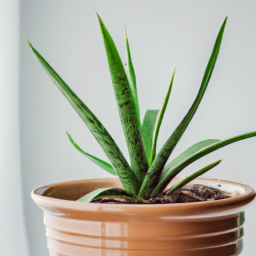
Safety Precautions for Indoor Plant Care
Indoor plants not only add beauty and freshness to our homes but also provide numerous health benefits. They purify the air, reduce stress, and boost our mood. However, it’s important to remember that some indoor plants can be potentially dangerous if not handled or cared for properly. In this article, we will explore the safety precautions you should take when it comes to indoor plant care, ensuring a safe and enjoyable environment for both you and your plants.
1. Choose Non-Toxic Plants
When selecting indoor plants, it’s crucial to consider the safety aspect, especially if you have children or pets in your home. Opting for non-toxic plants is a wise choice to prevent any accidental ingestion or allergic reactions. Some popular non-toxic indoor plants include spider plants, Boston ferns, African violets, and Christmas cacti. Always research the toxicity levels of a plant before bringing it home.
Additionally, it’s important to note that even non-toxic plants can cause mild discomfort if their leaves or stems are ingested. Keep an eye on curious pets or children who might be tempted to nibble on the foliage. If you suspect any ingestion, contact a medical professional or veterinarian immediately.
It’s worth mentioning that certain plants, while non-toxic, can still cause skin irritation or allergic reactions in sensitive individuals. If you or your family members have known plant allergies, it’s best to avoid those specific plant species to prevent any discomfort.
2. Proper Handling and Placement
Once you’ve chosen the right indoor plants for your home, it’s essential to handle them with care. Some plants have thorns, spines, or rough leaves that can cause injury. Always wear gloves while handling prickly plants like cacti or roses to protect your hands from potential harm. If you have children, ensure they are aware of the plants that require cautious handling and teach them to avoid touching or playing with them.
Placement of your indoor plants is also crucial for safety. Avoid placing plants in high-traffic areas where they might get knocked over or damaged. Tall plants should be placed away from windows or areas where they could tip over and cause injury. Hanging plants should be securely fastened to prevent them from falling and potentially harming someone below.
Furthermore, be cautious when moving large or heavy plants, as they can strain your back or cause accidents if dropped. Use proper lifting techniques or ask for assistance when needed.
3. Watering and Fertilizing Precautions
Watering and fertilizing your indoor plants is essential for their growth and well-being, but it’s crucial to take precautions to avoid any mishaps.
Firstly, be mindful of the water you use. Tap water can contain chemicals, such as chlorine or fluoride, that might be harmful to certain plants. Consider using filtered or distilled water to prevent any potential damage to your plants. Additionally, overwatering can lead to root rot and create a breeding ground for pests. Ensure proper drainage by using pots with drainage holes and emptying excess water from saucers promptly.
When it comes to fertilizing, always follow the instructions provided with the specific fertilizer you are using. Over-fertilizing can lead to nutrient burn, causing damage to the plant. Keep fertilizers out of reach of children and pets, as ingestion can be harmful. It’s advisable to wear gloves and protective eyewear when handling fertilizers to avoid any skin or eye irritation.
Regularly inspect your plants for signs of pests or diseases. If you notice any unusual spots, discoloration, or pests, take immediate action to prevent further damage. Use organic pest control methods whenever possible to minimize the use of potentially harmful chemicals.
In conclusion, indoor plants can bring joy and beauty to our homes, but it’s essential to prioritize safety when caring for them. Choose non-toxic plants, handle them with care, and place them strategically to prevent accidents. Be cautious when watering and fertilizing, following the instructions provided. By following these safety precautions, you can enjoy the benefits of indoor plants while ensuring a safe environment for everyone.
Essential Points
Indoor plants have become increasingly popular for their aesthetic appeal and the numerous benefits they bring to our living spaces. However, it’s important to address the concerns some people may have regarding the potential dangers associated with having plants indoors. While it is true that certain plants can pose risks, such as toxicity or allergies, with a little knowledge and care, these concerns can be easily mitigated.
Firstly, it’s crucial to identify any potentially harmful plants and ensure they are kept out of reach, especially if you have children or pets at home. Some plants, like the popular Peace Lily or Philodendron, contain substances that can cause mild to severe reactions if ingested. However, it’s worth noting that the majority of indoor plants are perfectly safe, and the benefits they offer, such as improved air quality and stress reduction, outweigh the minimal risks they may pose. Additionally, taking simple precautions like washing hands after handling plants or wearing gloves while pruning can further minimize any potential hazards.
In conclusion, while there are a few indoor plants that can be hazardous if not handled properly, the overall benefits of having indoor plants far outweigh the risks. By educating ourselves about the specific plants we choose to bring into our homes, and taking necessary precautions, we can enjoy the beauty and health benefits of indoor plants without worry. So, go ahead and embrace nature indoors, but remember to be mindful of the plants you choose and how you care for them.
Here are the top questions that we were asked:
Q1: Are indoor plants dangerous?
A1: No, indoor plants are generally safe and pose minimal danger to humans. However, there are a few considerations to keep in mind. While most indoor plants are non-toxic, some varieties may cause mild allergic reactions or skin irritations in sensitive individuals. It’s always a good idea to research the specific plant you’re interested in and ensure it is safe for your household.
Q2: Can indoor plants be toxic to pets?
A2: Yes, certain indoor plants can be toxic to pets if ingested. Cats and dogs are curious creatures, and some plants can cause digestive issues, vomiting, or even more severe health problems if consumed. It’s crucial to choose pet-friendly plants and keep them out of your furry friends’ reach. Consult with your veterinarian or do some research to identify plants that are safe for your pets.
Q3: Do indoor plants improve air quality?
A3: Absolutely! Indoor plants have been proven to improve air quality by filtering out toxins and releasing oxygen. They absorb carbon dioxide and various pollutants, such as formaldehyde and benzene, which can be found in common household items. The presence of indoor plants can help create a healthier and more refreshing environment, especially in spaces with limited ventilation.
Q4: How do I care for indoor plants?
A4: Caring for indoor plants is relatively easy. Most plants require regular watering, but it’s essential not to overwater them as it can lead to root rot. Provide adequate sunlight or artificial light depending on the plant’s requirements. Additionally, ensure proper drainage by using well-draining soil and pots with drainage holes. Regularly dust the leaves, trim dead foliage, and fertilize as needed. Each plant has its own specific care instructions, so it’s best to research the particular plant you have or consult with a local plant expert.
Q5: Can indoor plants help reduce stress?
A5: Yes, indoor plants have been known to reduce stress and promote a sense of calm. Studies have shown that being around plants can help lower blood pressure, reduce anxiety, and improve overall mood. The presence of greenery indoors can create a soothing and relaxing atmosphere, making it an excellent addition to any living or working space.
Dr. Olivia Green is a botanist with over two decades of experience in indoor plant cultivation. She holds a Ph.D. in Plant Biology and has dedicated her career to researching plant behavior in controlled environments. Dr. Green is passionate about helping plant enthusiasts master the art of indoor gardening through her extensive knowledge and practical insights.

